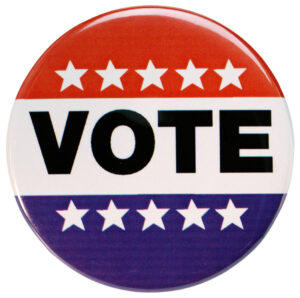- If you’re like most women, you’ll use as many as 11,000 tampons during the course of your lifetime.
- Add to that a couple of thousand pads and panti-liners and the ecological impact of your monthly cycle really starts to add up.
- All that feminine hygiene creates tons of trash. Particularly egregious are the plastic applicators that come with some tampons. They’re capable of escaping from any landfill – or wastebasket, for that matter – and often end up bobbing i a lake or river,or littering a playground or the roadside. The darn things are so indestructible even a car can run over them and not destroy them.
Conventional products may contain a mixture of rayon and cotton. Rayon has been implicated in Toxic Shock Syndrome, particularly for super-absorbent tampons. Cotton is highly pesticide-intensive; around 16 percent of the pesticides used globally are devoted to growing cotton. Plus, to look as white as possible, conventional pads and tampons may be bleached with chlorine, a process that can create dioxin, a known carcinogen.
Says Nena Baker, author of The Body Toxic, “If you’re a woman who is concerned enough about pesticide-tainted cotton to buy organic cotton clothing, it seems to me that you would, and likely should, have equal or greater concern about a product that is used inside our bodies.”
Sheila Hollender, a co-founder of Seventh Generation, agrees. In fact, she says,
it’s why her company manufactures tampons and sanitary pads made from 100% organic cotton fiber. “Your choice of our chlorine-free products can help reduce the amount of chlorinated toxins released into the environment and help make the world a healthier place for your family,” she said when I spoke with her recently about Seventh Gen’s “Let’s Talk Period” campaign, an effort to educate women about how to make healthier tampon choices.
The U.S. Food and Drug Aministration (FDA) regulates tampons and feminine care products in the marketplace. While the FDA admits that conventional tampons contain trace amounts of dioxin,the agency believes the chemicals in tampons pose no risk. Counters Sheila Hollender, “The problem with the FDA’s position is that it doesn’t allow for the accumulative exposure over a 40-year use of tampons.” In other words, we’re not subject to one slight exposure, but 11,000 or more.
GoodGuide, the online eco-rating system, claims that rayon is actually more environmentally-friendly than cotton, since it is more absorbent and therefore requires less material per tampon to do the job. Sheila Hollender acknowledges that “they have a point vis a vis rayon.” However, “they do not discuss the process that takes the wood pulp and turns it into rayon. Chlorine dioxide is used to bleach the rayon fibers used in conventional tampons. Furthermore, they don’t go into the issue of TSS” since their ratings do not evaluate tampons based on their actual health effects.
My recommendations?
1) Switch to a menstrual cup. You can skip tampons altogether by using a cup to catch your monthly discharge. The cup is as easy to use as a diaphragm is for birth control; you squeeze the rim to insert it, then pull it out and wash it in hot (but not boiling) soapy water so you can use it again. Depending on the brand, menstrual cups are available in latex or silicone and come in several sizes. MenstrualCups.Org offers a comprehensive overview of the plusses and minuses of using the cup, along with reviews of the brands available. Here’s one immediate benefit: a menstrual cup will save you a lot of money on throwaway tampons or pads.
2) Use organic cotton tampons. When you do use tampons, stick to the precautionary principle and choose organic cotton. Some brands to consider: Seventh Generation; NatraCare; Maxim.
3) Skip the applicators. Some applicators are plastic; others are cardboard. The best options are those without an applicator that you insert yourself, like o.b. tampons or Maxim. I can tell you from personal experience, it is extremely easy to insert a tampon without an applicator. Just wash your hands with soap and water before inserting, and then again after. Another benefit of no-applicator tampons: they’re small and easier to carry in your purse, pocket, or wallet.
4) Buy fragrance-free. Most fragrances in personal care products are made from phthalates, questionnable chemicals that have been linked to a variety of health problems. You don’t need perfumed tampons; as long as you don’t have any leaks, there shouldn’t be any odor. If you do have a leak, the artificial fragrance won’t really cover it up.
5) Recycle the packaging. Like other products, buy packages that are made from recycled materials, and recycle them. Most feminine care products come in cardboard boxes which can be recycled with the usual newspapers and junk mail. The organic cotton tampons and pads come in packages made from recycled, post-consumer waste, a more eco-friendly option than a box made from virgin wood pulp.
6) Tell stores you don’t want to buy tampons made with cotton or rayon treated with pesticides. Especially if the store manager is male, he’ll quickly take down your name and phone number and promise to get back to you on your request for organic cotton tampons rather than stand in the store aisle and debate this issue with you.
7) Use reusable menstrual pads when convenient. Traditional sanitary napkins and panty liners get wrapped up and thrown in the trash. One reusable cloth menstrual pad, which consists of a foundation pad and an easy-to-remove liner, can last for five years. The downside is that they’re inconvenient if you’re not at home where you can easily launder them without much fuss. Though some women might choose to use menstrual pads all the time, another option is to use them at home, and then switch to a menstrual cup when you’re out and about.
Says Sheila Hollender of Seventh Generation, “Women can actually help change the way manufacturers make tampons and sanitary pads by choosing to purchase organic cotton pads and non chlorine bleached pads.
“Women have the power of the purse – should they choose to exercise it.”
For more tips on healthy and green personal care, click here.
















6 thoughts on “Seven Ways to “Green” Your Period”
Thanks for the article! With all the concentration on reducing waste from babies disposable diapers and such, people often forget how much trash we ladies have to make. I love my menstrual cup. At $38 it was hard to make the leap, not knowing if it would work for me and my very heavy cycle, but it did and I’m happy I made the switch, and in the long run I’ve more than made up the cost of the cup. It can be messy to insert, but no messier than tampons without applicators. I still need to wear a backup liner, even with the cup, but it holds much more than a tampon and doesn’t have to be changed as often. I haven’t made the leap to reusable pads yet, but I do buy the natracare biodegradeable pads. I wish they were stickier, but that’s my only complaint about them.
Thank you for publishing this important and informative article! I encourage all who wish to know more about what we put in our bodies to check out http://www.letstalkperiod.com, do their homework, and pick the best option for them. Those wishing to try out an organic product can download a coupon from the site.
Great article. You had some great information i personally use cloth pads & a cup. both work AWESOME!
I use cloth menstral pads from gladrags and happy heiney’s. I have found washing them is not that hard. I put the used pads in a bucket and sprinkle them with borox to keep the smell down. I wait til my period is over to wash them. Then I rinse them in cold water, and do a double wash where they soak in my Charlie’s laundry soap, borox and oxyclean. When I have travelled, I have kept the used pads in a ziploc bag and then washed them when I got home and it worked great.
I use Natracare tampons and feel great about it as there aren’t any pesticides and other harmful carcinogens. My only qualm is the applicator–it is very uncomfortable to insert and the plastic applicator of traditional companies is much more comfortable. Although I won’t go back to the carcinogen-filled applicators of my younger days, I can understand others’ remarks on the discomforts of Natracare applicators. I’m surprised the company doesn’t invest in R&D for plastic-feeling, biodegradable applicators…maybe potato starch ones?! Just a thought =)
[…] Tampon applicators – No judgement here if tampons are your preferred menstrual care method. Consider these alternative ways to green your period. […]
Comments are closed.